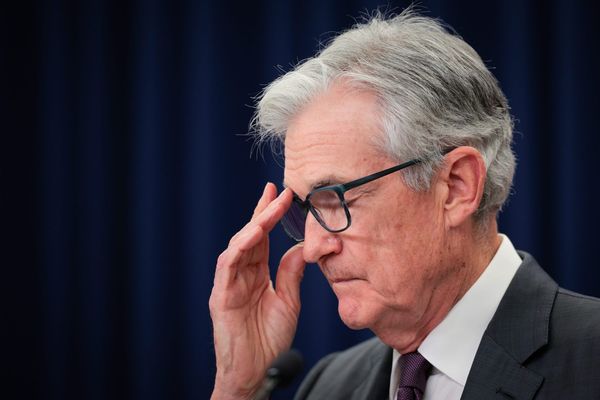
Donald Trump has claimed victory over Australia’s decision to lift restrictions on the import of US beef, but don’t expect to see the product on supermarket shelves anytime soon, says industry.
Much has been made of the timing of the decision, which followed a decade-long process by the agriculture department, and coincides with a push from the Trump administration to open up Australia’s market to US exporters.
The government has said there will be no weakening or compromise of Australia’s biosecurity in opening the gates to more US beef, and most in the cattle and farming industry doubt we’ll see much increase of US exports.
Here’s what you need to know about what impact it could have in Australia.
Sign up: AU Breaking News email
Does this mean we will see more US beef in Australia?
More than 99% of beef available in Australian pubs, supermarkets and restaurants is Australian beef, says Meat and Livestock Australia.
The industry body, as well as Cattle Farmers Australia and the National Farmers’ Federation, believe it’s unlikely the restriction change will have any significant material impact.
Dr Kate Sievert at Deakin University said US beef can’t compete with the strong domestic cattle industry.
She said it’s unlikely Australians could see more US beef on the supermarket shelf, but it could be used more in fast-food or prepackaged meals.
“It’s more likely to be used in specific segments of the food system, so areas like food service, particularly in fast-food service or ultra-processed products like ready meals,” Sievert said.
“The US relies a lot more on confined animal feeding operations where it’s cheaper to produce.”
That doesn’t necessarily make it cheaper overall than Australian beef.
The cattle industry has also pointed out that of the more niche or exclusive cuts of beef that the US produces, almost all are available already in Australia.
Sievert said the rule change would put Australia more in line with countries such as Japan and South Korea that have been importing more beef from the US.
But the US has also been facing a steady decline in its cattle herds, and production fell about 1% in 2024.
“Cattle herd sizes are the lowest they’ve been in decades,” Sievert said.
Will this smooth tariff tensions over with the US?
Asked whether the decision on beef will change the dynamic with the US administration, the trade minister, Don Farrell, told the Lowy Institute thinktank on Friday: “I’m not too sure.
“We haven’t done this in order to entice the Americans into a trade agreement,” he said.
“President Trump thinks it’s a good decision, [he’s] taking credit for it. We have to pursue our national interest, and our national interest is the removal of all of those tariffs.”
The government has been at pains to say the decision is not linked to the trade relationship, or the demands for open access from the US. Farrell said the government shouldn’t “give up” on the ambition to have the tariffs removed.
He also said Australia’s exports have been increasing to the US, ever since the tariffs were announced.
“We do $4bn worth of beef exports to the United States, and it’s increasing by the way, we export huge amounts of beef to China, again, that’s increasing.”
On Thursday, Donald Trump wrote in a post on Truth Social, “The other Countries that refuse our magnificent Beef are ON NOTICE.”
The Nationals said those comments from Trump sit at odds with the government’s assertion that the decision was separate to the tariffs.
The deputy leader of the Nationals, Kevin Hogan, said in a statement that Australia cannot use “our science-based biosecurity standards as a bargaining chip”.
“We have the US Trade Representative Jamieson Greer directly connecting this decision to the US-Australia trade relationship, but the Albanese Government is saying the complete opposite,” he said.
How did we get here?
Australia introduced a ban on US beef imports in 2003, in response to an outbreak of bovine spongiform encephalopathy (BSE) or mad cow disease.
Any country seeking market access to import fresh beef products must undergo a BSE risk assessment.
In 2015, Australia granted the US a category 1 status, following a risk assessment, meaning the US had “comprehensive and well-established controls” to prevent BSE outbreaks in cattle. Category 1 countries are able to import fresh and processed beef into Australia so long as they comply with other conditions.
In 2017, Australia released the beef review, which assessed applications for market access from countries that had passed the BSE risk assessment, including the US.
That review should have been the final step in allowing access to the Australian market – except it specified that the animal from which the beef was derived must have been “continuously resident” in the approved country since birth.
In 2019, the government began allowing beef imports from cattle traceably born and raised in the US. Imports were also subject to an ongoing biosecurity review that, in practice, has still meant no imports of fresh beef.
The restriction changes now allow beef exports that are sourced from cattle born in Canada or Mexico, which the US has been importing to bolster its national herd. That cattle must be traceable, and legally imported and slaughtered in the US.
The US imported an average of 700,000 cattle, buffalo or bison from Canada each year between 2019 and 2023 and 1.2 million per year from Mexico over the same period.
However, live cattle imports from Mexico have been banned in the US since May, due to the spread of a flesh-eating pest.







